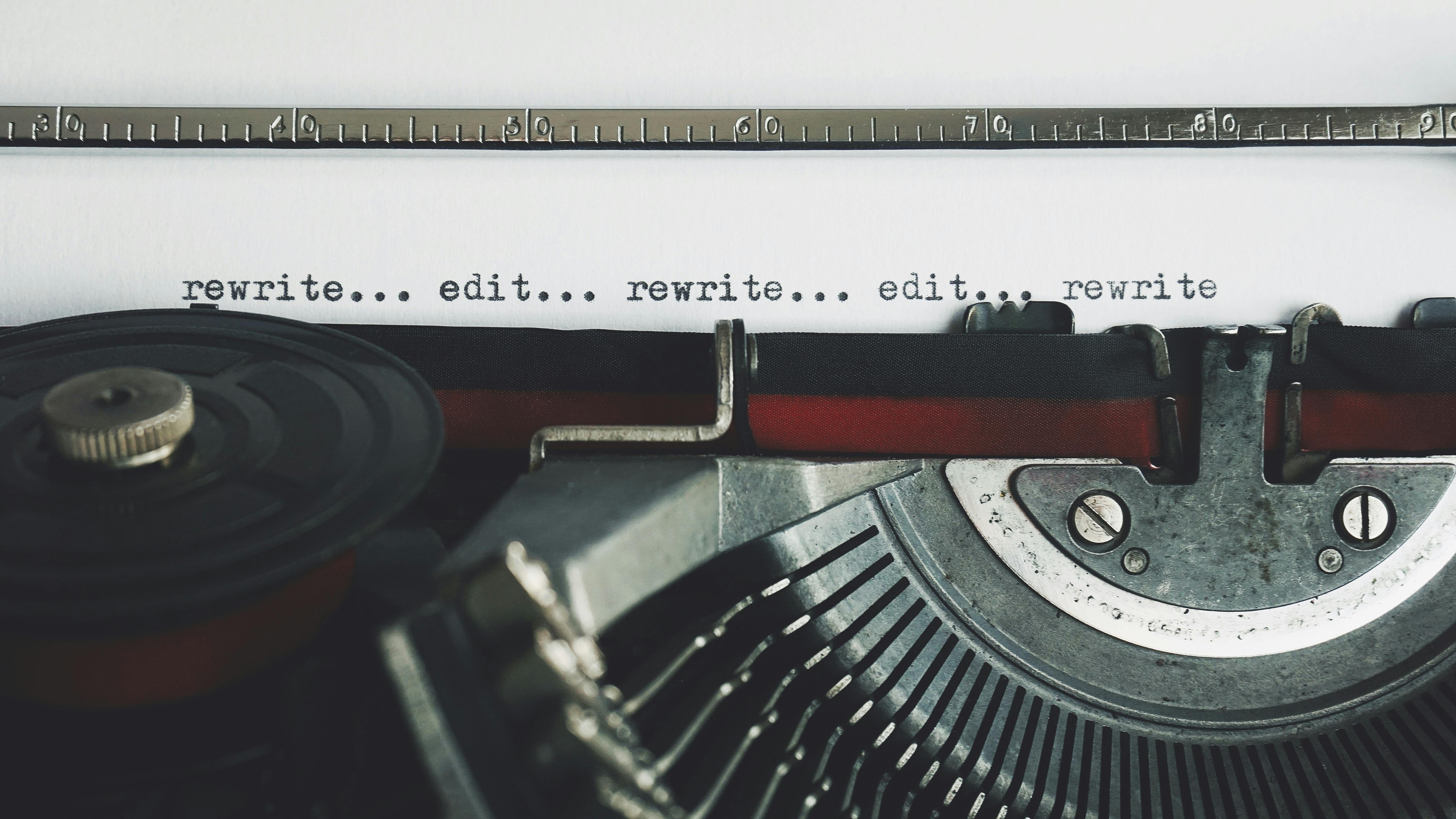So, I stumbled upon some gold mines of wisdom recently that I just can’t keep to myself—the top editing strategies every writer needs to know. You know how it goes; you pour your heart and soul into penning down your thoughts, only to reread it and find it doesn’t quite hit the mark. It’s like cooking a meal that needs a bit more salt. The right editing techniques can be that salt, transforming your good work into something unforgettable. Let me walk you through these game-changing tips that have completely revolutionized how I approach editing my work. Trust me, once you get the hang of these strategies, there’s no looking back.

Understanding the Purpose of Editing
Defining what editing includes
When I talk about editing, I’m referring to the comprehensive process that involves scrutinizing and correcting the text to improve its quality. This encompasses everything from fixing typos, grammar, and punctuation, to checking the overall flow, coherence, and structure of the content. It’s like giving your car a full service: you’re not only looking at the surface but also making sure everything under the hood runs smoothly.
Differentiating between content editing and copy editing
It’s crucial to understand the distinction between content editing and copy editing. Content editing, also known as substantive or developmental editing, dives deep into the heart of the text. I’m looking at the big picture: Are the arguments logical? Do the events in my story make sense? On the other hand, copy editing focuses on the language and correctness of the text. Here, I’m nitpicking grammar, spelling, punctuation, and consistency in style. Imagine it as fine-tuning a piece of music—the notes are already there; they just need to be played correctly.
Exploring the importance of a thorough edit in writing
A thorough edit can be the difference between a good piece and a great piece. It enhances readability, ensures clarity, and builds credibility. When I skip or rush through the editing phase, I risk confusing or losing my audience due to unclear thoughts, structural issues, or simple errors. In other words, a diligent edit not only polishes my writing but also reinforces my respect for my readers.
The Art of Self-Editing
Learning objectivity in viewing your own work
One of the biggest challenges I face in self-editing is maintaining objectivity. It’s tough because I’m attached to what I’ve written. Detaching myself from my work and viewing it as a reader or a critic does can reveal surprising insights and areas of improvement which I might not have noticed before.
Strategies to disconnect from the content for better editing
To achieve the necessary distance for effective self-editing, I’ve found a few strategies quite helpful. First, taking a break after writing—stepping away for a few hours or even days. When I come back, I see my work with fresh eyes. Reading the text aloud is another technique that helps me catch awkward phrasing and unnatural dialogue.
The role of time in self-editing
Time plays a crucial role in self-editing. Rushing through the process can lead to oversights. Allowing myself the luxury of time not only helps in gaining perspective but also in carrying out multiple rounds of edits, each focusing on different aspects: structure first, then language, and finally, the nitty-gritty details.

Grammar and Punctuation Basics
Revisiting important grammar rules
Even seasoned writers need to brush up on grammar rules now and then. I sometimes revisit the basics—subject-verb agreement, the proper use of tenses, and pronoun antecedents. It’s amazing how easy it is to slip on these fundamental rules, especially when I’m deeply engrossed in getting the content out.
Understanding the role of punctuation
Punctuation is like the traffic signals of language; it guides the reader through the text. Knowing when to use a comma versus a semicolon, for instance, can affect the pace and clarity of my writing. Misplaced or missing punctuation can derail a beautifully crafted sentence, leaving my readers confused.
Common grammar and punctuation mistakes to avoid
There are a few traps I watch out for, like overusing commas, confusing ‘its’ with ‘it’s’, and misplacing modifiers. These might seem minor, but they can significantly impact the readability and professionalism of my writing. Keeping a checklist of common mistakes can be a lifesaver during the editing phase.
Structural Editing Techniques
Understanding how to assess the order of paragraphs or chapters
Assessing the order involves ensuring that my ideas or narrative flows logically and smoothly from one section to the next. Sometimes, what makes sense in my head doesn’t translate clearly on paper. Rearranging paragraphs or chapters can often resolve confusing narratives or disjointed arguments.
How to spot redundancies and repetitions
I’m always on the lookout for redundancies and repetitions. It’s easy to repeat points or phrases, especially in longer texts. But this can bore or frustrate readers. I try to be ruthless in cutting out or rephrasing these parts to keep my writing crisp and engaging.
The importance of logical flow and coherence in your text
Ensuring that my text has a logical flow and coherence is paramount. Each sentence, paragraph, and chapter should lead naturally to the next. When the content is coherent, readers can follow my train of thought or narrative easily, making for a much smoother reading experience.

Maintaining Consistency in Writing
Checking for consistency in tone and style
Maintaining a consistent tone and style throughout my writing helps reinforce the message or story. If I’m writing a formal report, a casual, chatty tone might jar readers. Similarly, a sudden shift in writing style can distract and confuse. I strive for uniformity to keep my readers engaged and focused.
Ensuring consistency in character descriptions and story setting
When working on fiction, I pay close attention to keeping character descriptions and settings consistent. It can be jarring if a character suddenly acts out of character or if a setting inexplicably changes. Consistency in these elements is crucial for maintaining the believability of my fictional world.
The role of consistency in making your text credible and believable
Overall, consistency underpins the credibility and believability of my writing. Whether it’s adhering to factual accuracy in non-fiction or maintaining character and setting integrity in fiction, being consistent is what keeps my writing grounded and my readers invested.
Effective Word Choice and Language Use
Choosing the most appropriate words for your text
Choosing the right words is akin to an artist selecting the perfect shade of color. It’s not just about what is accurate but what evokes the right emotion or image. I often spend time pondering over a single word, as each one carries weight and can subtly influence the tone and impact of my writing.
Avoiding unnecessary jargon and complex language
I’ve learned that using jargon or unnecessarily complex language doesn’t make my writing more impressive; it makes it inaccessible. My goal is to communicate, not obfuscate. Simplifying my language without dumbing it down ensures that my message is clear and understood by my intended audience.
Strategies for simplifying and improving the clarity of your language
One strategy I employ is to pretend I’m explaining my concept to a friend who knows nothing about the topic. This helps me strip away the complexity and get to the heart of what I want to say. Simplifying language isn’t about lowering the quality of writing; it’s about enhancing clarity and impact.

Highlighting and Developing Key Points
Identifying the key points in your text
First, I identify what I want my readers to take away from my writing. What are the key points or messages? Ensuring these are clear in my mind guides me in how I structure and emphasize content, making sure these points stand out.
Using various emphasis techniques to highlight them
There are several techniques to highlight key points: repetition, strategic placement (beginning or end of paragraphs or sections), and using visual elements like headings or bullet points. Each has its place, depending on the context and medium of my writing.
Ensuring your key points are clear and well-developed
I devote enough space to properly develop and clarify my key points. This might involve providing examples, data, or narratives to illustrate and reinforce these points, ensuring they are not only highlighted but also thoroughly understood by the reader.
The Significance of Feedback and External Editing
The importance of getting your work edited by others
No matter how good I get at self-editing, there’s immense value in having someone else review my work. Fresh eyes can catch errors I’ve overlooked and provide perspectives I haven’t considered. Feedback from others is instrumental in elevating the quality of my writing.
Choosing the right person to review and edit your work
Not all feedback is created equal. Choosing the right person to review and edit my work is crucial. Depending on the type of writing, I look for someone knowledgeable in the subject matter or skilled in editing. Their expertise can provide targeted insights that I might miss on my own.
How to respond and act on the feedback you receive
Receiving feedback can be tough, especially if it’s critical. However, I’ve learned to view it as a gift. It’s an opportunity to learn and improve. I carefully consider all feedback, discerning what resonates and aligning suggestions with my vision for the piece before making revisions.
The Use of Editing Tools and Software
Exploring various editing and proofreading tools available
There’s a plethora of editing tools and software out there, from grammar checkers to style guides. These can be incredibly helpful in catching common errors and inconsistencies, allowing me to focus on the more nuanced aspects of my writing.
Weighing the pros and cons of using editing software
While editing software can be a boon, it’s not infallible. It’s essential to remember that these tools are aids, not replacements for human editing. They might not catch everything, especially context-specific issues or nuanced tone and style nuances.
Choosing the most suitable editing tools according to your needs
Deciding which tools to use depends on my specific needs and the type of writing I’m doing. For academic or technical writing, I might prioritize tools that are robust in checking factual accuracy and citation styles. For creative writing, simpler grammar and spell check might suffice, supplemented with manual editing for style and flow.
Final Proofreading and Review Process
Understanding the importance of proofreading
Proofreading is the final frontier before publication or submission. It’s my last chance to catch any typos, errors, or inconsistencies. Skipping this step can undermine all the hard work I’ve put into my writing, potentially leading to embarrassing mistakes making it to the final version.
Techniques for an effective final review
For an effective final review, I adopt a meticulous approach. I read through the text multiple times, each focusing on different elements: once for spelling errors, another for punctuation, and so on. Sometimes, changing the font or print format can help me spot errors that I’ve previously missed.
Common oversights during proofreading and how to avoid them
Common oversights include homophones (words that sound the same but have different meanings), incorrect use of apostrophes, and misaligned formatting. To avoid these, I pay extra attention to commonly confused words, double-check possessives and contractions, and review the overall layout. Additionally, getting someone else to proofread can catch mistakes I might have glossed over.
In conclusion, editing is an art as much as it is a science. Whether it’s through self-editing or seeking external feedback, the goal remains the same: to refine and enhance my writing. By understanding and implementing these strategies, I can ensure that my text is clear, coherent, and engaging, effectively communicating my message to the readers.



